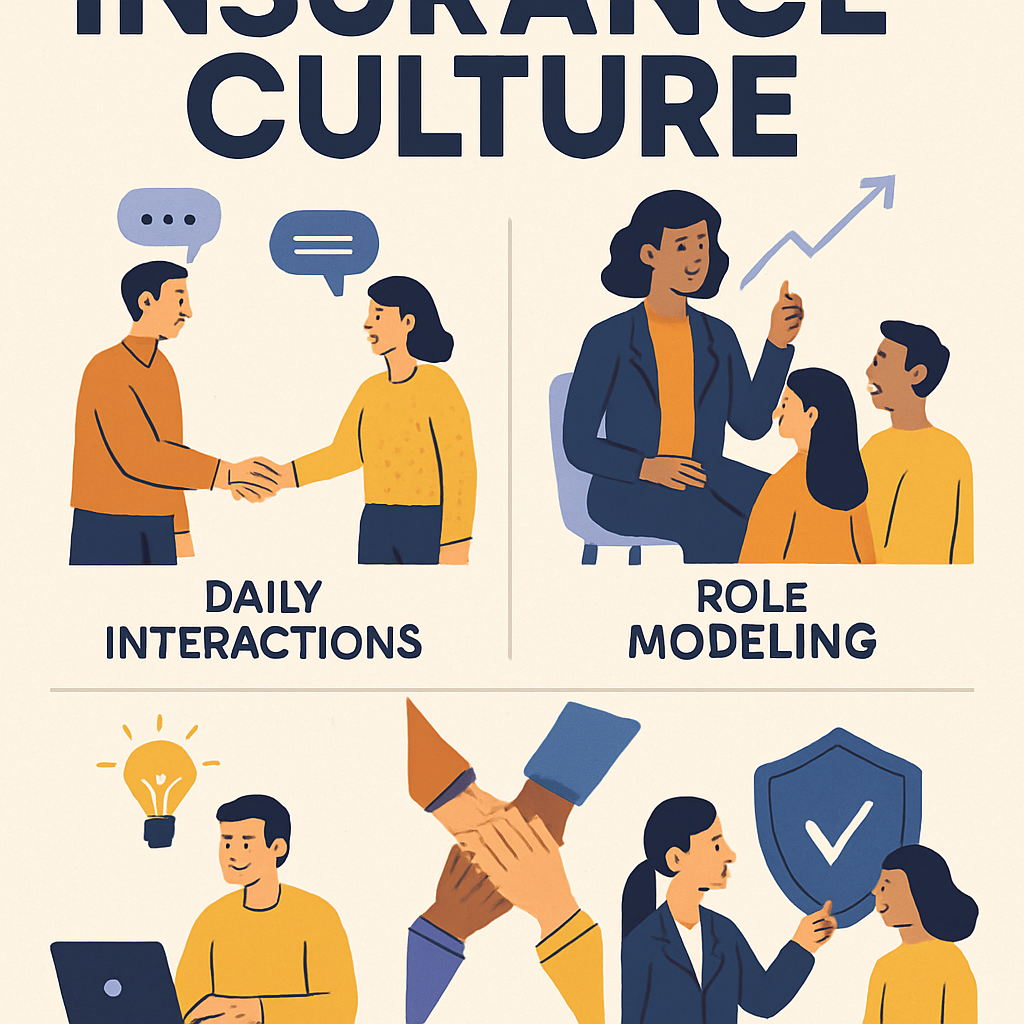6 min read
Building Corporate Culture – Right People, Right Seats Approach
Building Corporate Culture – Right People, Right Seats Approach by Nicholas Lamparelli tldr; Right People, Right Seats” is not merely a...
3 min read
.jpg) Nicholas Lamparelli
:
Oct 27, 2025 9:19:48 AM
Nicholas Lamparelli
:
Oct 27, 2025 9:19:48 AM

Organizational culture transformation ranks among the most formidable challenges leaders face, yet it's essential for sustained competitive advantage. Roger L. Martin's article, Culture Change Strategy: Three Rules for Making Culture Change Happen, presents a powerful framework that challenges conventional wisdom. His central thesis? Cultural transformation doesn't stem from executive directives or organizational restructuring. It emerges through authentic role modeling and the quality of daily interpersonal exchanges. This perspective holds particular significance for insurance companies, including brokerages and carriers, as they navigate the regulatory and capital intensity that makes insurance...insurance.
The insurance sector operates within a framework of stringent regulation and conservative risk management. These characteristics often foster organizational inertia and resistance to behavioral evolution. Yet mounting pressures (the imperative to innovate, operational efficiency demands, and heightened customer experience expectations) make cultural evolution unavoidable. Whether cultivating innovation, enhancing collaboration, or embedding customer-centricity, insurance executives must orchestrate these transitions strategically.
Conventional culture change tactics in insurance (team restructuring, policy implementation, new systems deployment) typically disappoint. These "wholesale" interventions target formal organizational architecture but neglect the interpersonal and behavioral undercurrents that genuinely shape culture. Martin's framework redirects attention to the "retail" level: the daily interactions that fundamentally influence employee mindsets, actions, and collaborative patterns.
Martin contends that wholesale interventions (reorganizations, revised compensation schemes) prove insufficient for authentic cultural evolution. While creating the illusion of progress, they bypass the interpersonal dynamics that truly define organizational culture.
For insurance companies, this necessitates moving beyond hierarchical proclamations toward grassroots engagement. Rather than merely declaring a customer-centric transformation, insurance brokerages and carriers should enable frontline personnel to interact directly with clients, gathering firsthand insights into their challenges and expectations. Through these meaningful interpersonal exchanges, employees collectively develop practical understanding of customer-centricity in action.
Martin identifies the interpersonal domain as culture change's "linchpin." Through routine interactions, employees construct shared interpretations and implicit guidelines governing acceptable conduct and organizational priorities.
Insurance organizations can harness this principle by dismantling traditional functional silos. Brokers and underwriters, for instance, frequently operate independently, creating misalignment and tension. Establishing collaborative problem-solving initiatives (such as co-designing specialized policies for complex exposures) builds a culture characterized by cooperation and reciprocal respect.
Furthermore, insurance leaders can deploy storytelling strategically to reinforce cultural aspirations. Publicizing narratives of employees exemplifying desired behaviors (exceptional client service, collaborative claim resolution) creates a shared cultural narrative that guides organizational conduct.
Martin's most critical insight concerns role modeling's transformative power. Leaders establish cultural norms through personal behavior. As Martin observes, "Every interpersonal interaction for a leader is a two-edged sword." Leaders failing to embody desired cultural attributes inadvertently perpetuate the very behaviors they seek to eliminate.
In insurance contexts, this demands that leaders actively manifest organizational values. If a carrier aspires to foster innovation, leaders must visibly participate in ideation sessions, celebrate creative approaches (including instructive failures), and encourage prudent risk-taking. Similarly, brokerages pursuing enhanced client collaboration require leaders who prioritize direct client engagement and model constructive problem-solving.
Martin cites AG Lafley, Procter & Gamble's former CEO, who consistently queried teams about consumer insights while personally engaging customers. Insurance leaders can adopt parallel approaches by regularly connecting with policyholders, agents, or brokers to understand pain points and ground decisions in practical realities.
To operationalize Martin's principles, insurance organizations should consider these actions:
Engage employees at all levels: Create forums for employees to share ideas and collaborate on solutions. For example, host cross-functional workshops to address common challenges, such as improving claims processing or enhancing customer onboarding.
Model desired behaviors: Leaders should actively demonstrate the values they want to instill, whether it's innovation, customer focus, or collaboration. This could include participating in team meetings, providing constructive feedback, or recognizing employees who embody the desired culture.
Focus on interpersonal interactions: Encourage managers to build strong relationships with their teams and facilitate open communication. For example, claims managers could hold regular one-on-one meetings to discuss challenges and opportunities for improvement.
Celebrate small wins: Highlight examples of employees or teams who successfully embody the desired culture, whether it's resolving a complex claim quickly or developing a new product for an underserved market.
As Roger L. Martin highlights, culture change is not about sweeping reforms or wholesale solutions. It's about retail-level, interpersonal interactions and role modeling. For insurance organizations, this means shifting the focus from policies and processes to people and behaviors. By thinking retail, fostering collaboration, and leading by example, brokers and carriers can build cultures that are more innovative, customer-focused, and resilient in the face of change.
Culture change is hard, but as Martin reminds us, it starts with leaders. By being the change they want to see, insurance leaders can set the foundation for lasting cultural transformation.

6 min read
Building Corporate Culture – Right People, Right Seats Approach by Nicholas Lamparelli tldr; Right People, Right Seats” is not merely a...

3 min read
Aligning Business and Personal Goals: A Strategy for Mutual Success by Lance Dowdell and Max Smith In today’s competitive business landscape,...

5 min read
The Six-Person War Inside Your Projects: Why Your Projects Often Fail by Whitney Carpenter Doig and Nicholas Lamparelli Work is everywhere...